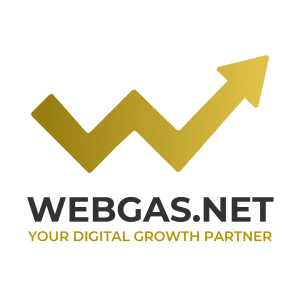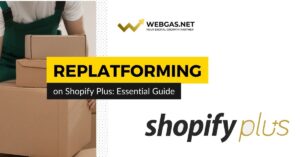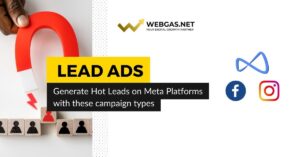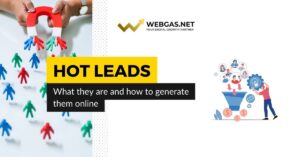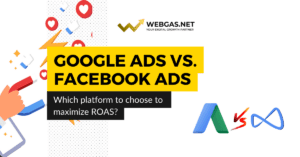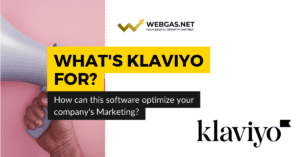Introduction to Facebook Ads and the Facebook Ads Funnel
When defining an online advertising strategy for an e-commerce business, the Facebook channel (as of today, Meta, which also includes Instagram as a social media, among other things) turns out to be almost indispensable for the purpose of important returns on advertising investments that, given the right business conditions, lead to business growth in terms of sales and profits.
This argument applies especially to Business to Consumer (B2C) e-commerce, as the social media in question are populated by a rather diverse ”flesh and blood” audience. Typically on Instagram the average audience has a lower age than Facebook users.
In this context, therefore, Facebook Ads represent the solution offered by Meta for companies of different types and any size in order to promote their products and/or services to their target audience segment.
The Facebook Ads Funnel represents, in this sense, an advertising strategy through which, through a technical setup of campaigns, we ”accompany” the user from the discovery phase of our product/service/brand to the conversion and, often, conversion conversion phase.
The benefits of Facebook Ads for an e-commerce
There is little doubt that Facebook Ads represent a not insignificant opportunity for businesses of different types since’ they allow you to reach a rather active target audience.
Consider that in Italy based on a report by GlobalWebIndex. users spend an average of 1 hour and 46 minutes per day on social media, while globally the average is even higher with users spending almost 2.5 hours each day on different social networks, including Facebook and Instagram which are definitely two of the most popular.
For an ecommerce business, which is a business that sells online (”remotely”) to an audience connected via the Internet, Facebook Ads probably represent an even more relevant business opportunity for a number of aspects that we will see in a moment.
First, however, an important premise should be made: at the basis of any online (and also offline) advertising strategy, whether on Social channels, search engines or otherwise, a clear objective must be defined, which is the ”beacon” that guides it.
The defined goal must be S.M.A.R.T. (intelligent), which stands for:
- Specific (Specific); the defined goal should not be vague or general, it should be clear and have a precise and specific focus, precisely.
- Measurable; the goal must be measurable, that is, it must have not only qualitative but also quantitative aspects so that it becomes possible to analyze its progress through reliable numbers.
- Achievable; the defined goal must be realistic, i.e., achievable by the enterprise based on the conditions under which it operates and resources available (e.g., budget, human resources etc.).
- Relevant; the objective that drives an advertising strategy must have a high priority, a higher weight than other micro-objectives.
- Time-based; the defined goal must also have a well-defined time frame, i.e., a time frame within which it must be achieved.
An example of an S.M.A.R.T. goal for an e-commerce that can be pursued through online advertising campaigns might be the following:”increase the sales volume of product category X by 15 percent in 90 days.”
Obviously, a business can pursue several SMART micro-goals concurrently that are likely to lead to the achievement of a SMART macro-goal.
Once the S.M.A.R.T. goals to be pursued are defined, it becomes easier to define an advertising strategy on different online channels, including Facebook and Instagram.
Let us now see what are the main four advantages that should prompt an e-commerce company to invest advertising budget in this channel:
- Facebook (as of today Meta) is a Full Funnel platform. Through Facebook Ads, it is possible to reach the user at all stages of the conversion journey: from the Prospecting (or Tofu) phase to the Remarketing (or Bofu) phase, passing first through the Re-engagement (or Mofu) phase. We will see the meaning of these terms in the next section where we will discuss the Facebook Ads Funnel in more detail.
- Tracking events and user behavior. One of the most important benefits of Facebook Ads, and of online advertising more generally, is measurability. Although the latter has been messed up by the recent iOS14 updates that has led to tracking issues on social and beyond, it still represents a significant advantage over traditional advertising as it allows to analyze the performance of a campaign by identifying, any problems that can be promptly resolved, to understand which creatives and targets are the best/worst, to perform tests and make decision data-driven, no longer solely based on mere personal intuition.
For the purpose of proper tracking you need to install on your website the so-called Pixel, which is a small piece of JavaScript code that allows you to track the actions of visitors on our website and study their behavior. This step is a necessary condition for setting up successful campaigns on Facebook, for the following two main reasons:
- Pixel allows us to quantitatively track and measure events, i.e. strategically relevant actions taken by users on our website (e.g.: number of purchases, value of purchases, number of additions to cart etc.). The trackable events are numerous, typically for an e-commerce the most relevant are as follows: ViewContent (displaying the product card), AddToCart (adding to cart), Initiate Checkout (beginning checkout phase), AddPaymentInfo (adding payment information), and Purchase.
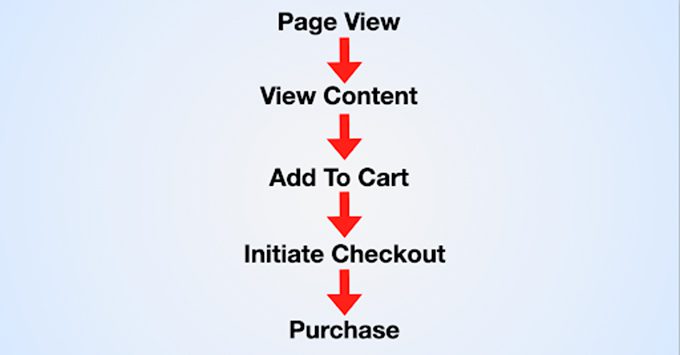
- Thanks to the events tracked by Pixel, it is possible to create so-called Custom Audiences based precisely on the main events set through Pixel. This type of audience becomes essential for Remarketing campaigns, which allow an e-commerce company to recover a share of conversions that are physiologically lost in Prospecting and Re-engagement campaigns.
For example: starting from the ”AddToCart” event in the platform, it is possible to create a custom audience of those who have added one or more products to the e-commerce cart page in a defined time frame. This audience then can be used in dedicated Remarketing campaigns that incentivize these specific users to end the purchase.
- Dynamic listings (DPA and DABA), specially created for e-commerce with a product catalog. They represent one of the most important types of campaigns for an e-commerce. These are ads that vary from user to user (dynamic, indeed!) in that they show the products in the catalog to an audience that has already interacted with some of them (DPA) and is already familiar with the brand in question. Or you can show dynamic ads to a target audience that has not yet connected with the brand (DABA).
In fact, DPAs are most useful at the remarketing stage, showing, for example, a user a product added to the shopping cart but not purchased while DABAs can be useful at a higher stage of the funnel, showing relevant advertisements to an audience interested in our type of offer that nonetheless perhaps did not know our brand.

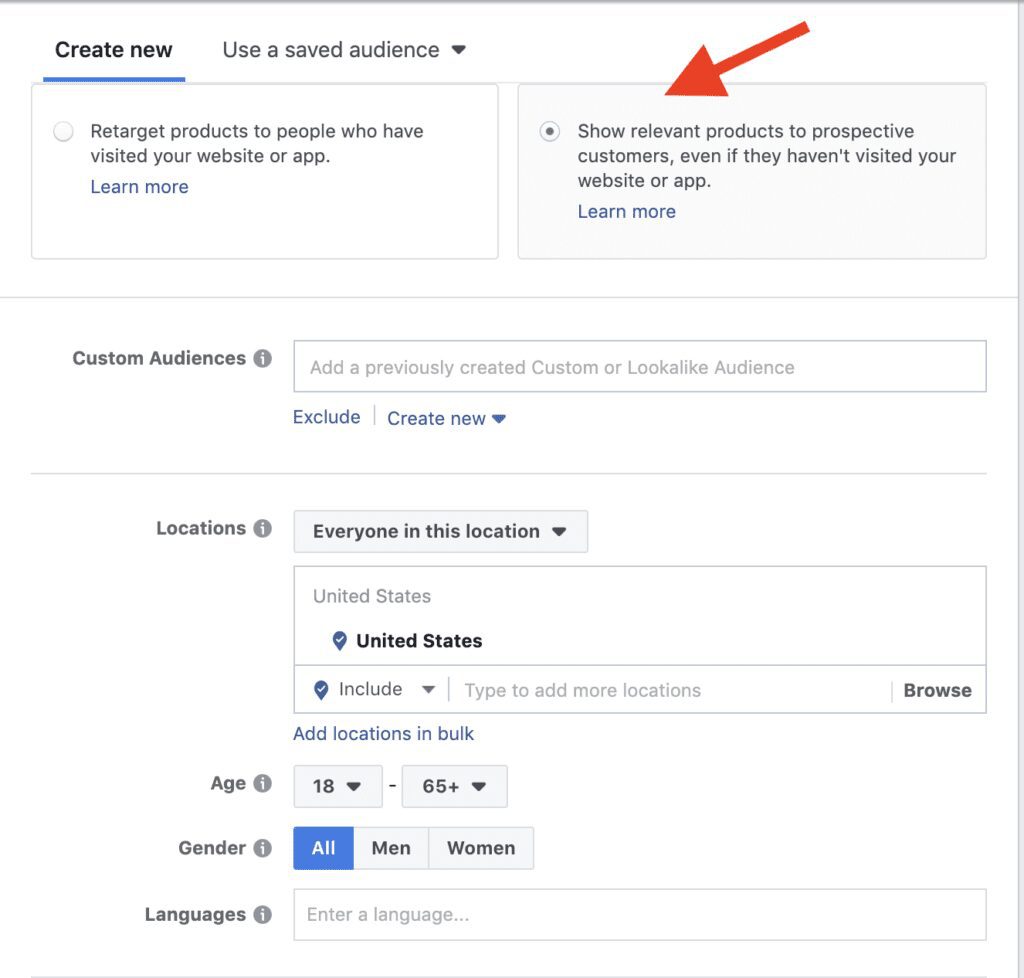
4. Facebook and Instagram Shop. As further evidence of the special affinity between e-commerce business and the Meta platform, it is possible to mention the possibility of being able to create real ”Shops” within the platform, i.e., ”mini-e-commerce” through which the consumer can purchase products from the catalog without ever leaving the social in question (Facebook or Instagram). While some on-site data may be lost, the main benefit is to reduce the user’s path to purchase by eliminating some typical frictions found within an unoptimized e-commerce site.
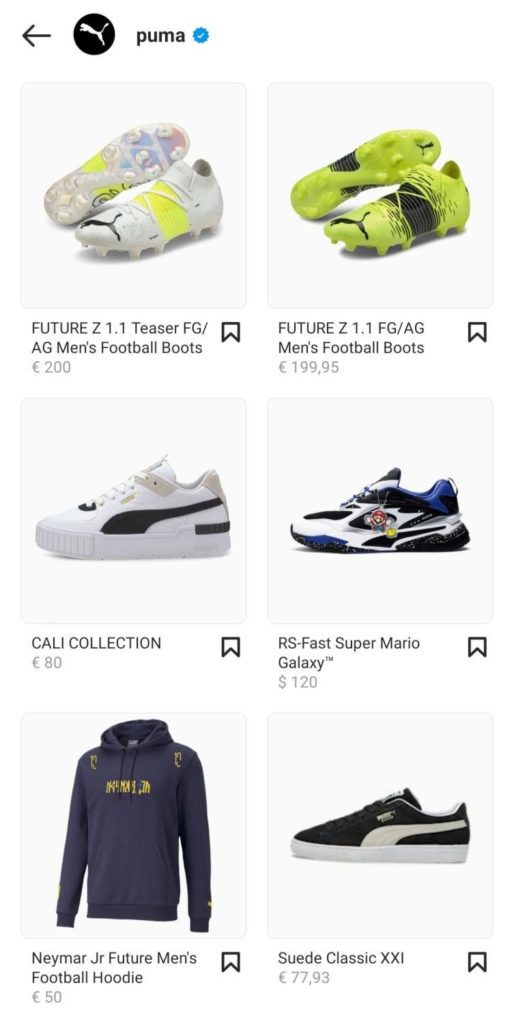
Example of Facebook Shop
Facebook Ads Funnel: Prospecting, Re-engagement, Retargeting, Retention
Having defined the main advantages that should drive an e-commerce business to invest in the Facebook/Meta platform, we can now delve into the concept of the Facebook Ads Funnel for this type of business.
As pointed out earlier a Facebook Ads Funnel can be defined as a broad advertising strategy that, through a technical setup of campaigns, allows us to accompany the user from the phase of discovery of our brand to the phase of purchase and repurchase of our products, passing through an intermediate phase of consideration.
Through the Facebook Ads Funnel, an attempt is made in this way to bring a new potential target customer to become an actual and regular customer, through a series of advertising campaigns created by taking advantage of the solutions offered by the platform.
Four phases can be identified in a Facebook Ads Funnel: Prospecting, Re-Engagement, Retargeting and Retention.
Prospecting (Top of the Funnel)
The initial Prospecting phase (also known as Top of The Funnel) means that phase of the conversion path through which, with our advertisements, we try to intercept that target audience that is likely not yet familiar with our brand and the solutions offered to a problem or need of theirs.
These are therefore campaigns that, theoretically, do not have sales as their main objective but rather the generation of awareness of our brand (Brand Awareness) among this audience, so that it is taken into consideration by them when they have to make a purchase choice.
From a technical point of view, always considering an e-commerce, two types of campaigns can be created in the platform at this stage;
- A campaign with a”Conversions” goal generally optimized for a pre-purchase event such as ViewContent or AddToCart, or even Purchase if they are products that can be purchased impulsively.
- A DABA campaign set through objective ”Catalogue Product Sales ” , described in the previous chapter.
Typically the audience targeted by these campaigns is either a broad (broad, interest-free) audience, or targeted by interest, or even a LookAlike audience created from a custom audience. Suchaudiences, in technical jargon, are called ”cold audiences” to indicate that they are far from the conversion stage.
Generally in the Prospecting phase most of the budget is allocated, since’ the audience to be intercepted is quite large.

Re-Engagement (or Consideration or Middle of the Funnel)
Generally, campaigns launched in the Prospecting phase are not enough to convince a ”cold” audience, who until recently did not know our brand and products, to buy right away.
That is why it is necessary in some cases, depending on the available budget, margins, and product category, to launch intermediate ”Re-Engagement” campaigns that bring the user closer to our brand, our values, and our products and services by accompanying them toward the crucial stage of the entire advertising strategy: the purchase.
In this type of advertisement, the goal is to make our brand or offering better known to target customers by leveraging storytelling, telling the vision or mission of the company, or exploiting angles such as social proof.
In this type of campaign, the affected audience is referred to as a ”warm audience,” meaning an audience that has already shown an interest in our products or services but is not yet ready for purchase conversion.
From a purely technical point of view, it is possible for an e-commerce company to implement campaigns with objective ”Conversion” Optimized for a pre-purchase event such as. ”Added to Cart” o ‘‘Start of the Checkout Phase’. If you are dealing with products that can be purchased impulsively, you may also consider optimizing for ”Purchase” directly.
Another very useful and popular type of campaign for e-commerce that can be implemented at this intermediate stage is one that targets lead generation with newsletter sign-ups. The goal is to get the user’s e-mail in such a way as to leverage other communication channels, such as e-mail marketing, in a multichannel perspective. As such, it is possible to create campaigns with a goal of ” Conversions ” optimized for ”Lead” event or take advantage of the objective ”Generation of Contacts” which allows you to collect email or other information without leaving the platform.
Generally, the targeted audience within these campaigns consists of those who have interacted in some way with the brand’s Facebook and Instagram page (Social Engagers) or those who have visited the website and viewed product sheets.
In the Re-Engagement phase generally 10-20% of the entire conversion funnel budget is allocated.
Retargeting (or Conversion or Bottom of the Funnel)
It represents probably the most delicate phase of the entire Facebook Ads Funnel since, theoretically, it is the one ”responsible” for bringing in the most conversions and consequently higher Returns on Advertising Investments.
In fact, after reaching a cold audience that did not know our brand and our offer and after stimulating them with Consideration campaigns, it becomes imperative to push toward the final purchase conversion which is the main goal of the entire funnel.
It is therefore a matter of targeting an audience defined as”hot ” (hot audience), i.e., one that has shown advanced interest in our offer and therefore needs a small incentive to get to purchase conversion. Generally these are those who abandon carts or the Checkout phase, which in fact, precedes the actual final transaction.
From a technical point of view for an e-commerce, it is possible to implement two types of campaigns at this stage;
- A campaign with a goal of ‘ ”Conversions” Optimized for the ” Purchase” event.
- A dynamic DPA campaign through objective ‘ ‘Catalog Product Sales” so that the target audience is shown the same products they have interacted with inside or outside of Facebook.
At this stage, 10-30% of the budget defined for the entire funnel is allocated, which also varies depending on the traffic sources of the website in question.
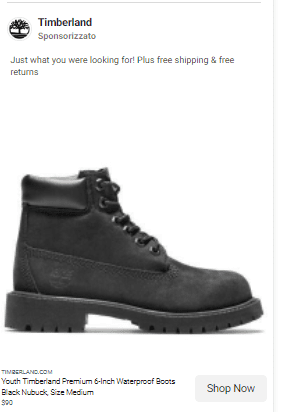
Retention
For e-commerce that sell periodic or recurring purchase products (food, clothing etc…) the Facebook Ads Funnel cannot and should not end at the Conversion stage.
The Retention phase, understood as the phase in which already converted customers are incentivized to repurchase in such a way as to retain them, is of paramount importance for the purpose of revenue growth and profits at lower acquisition costs. In fact, on average acquiring new customers is as much as six times more expensive than convincing existing customers to repurchase.
In addition, according to a study by theHardard Business Review, a 5 percent increase in customer retention helps increase corporate profitability by more than 20 percent.
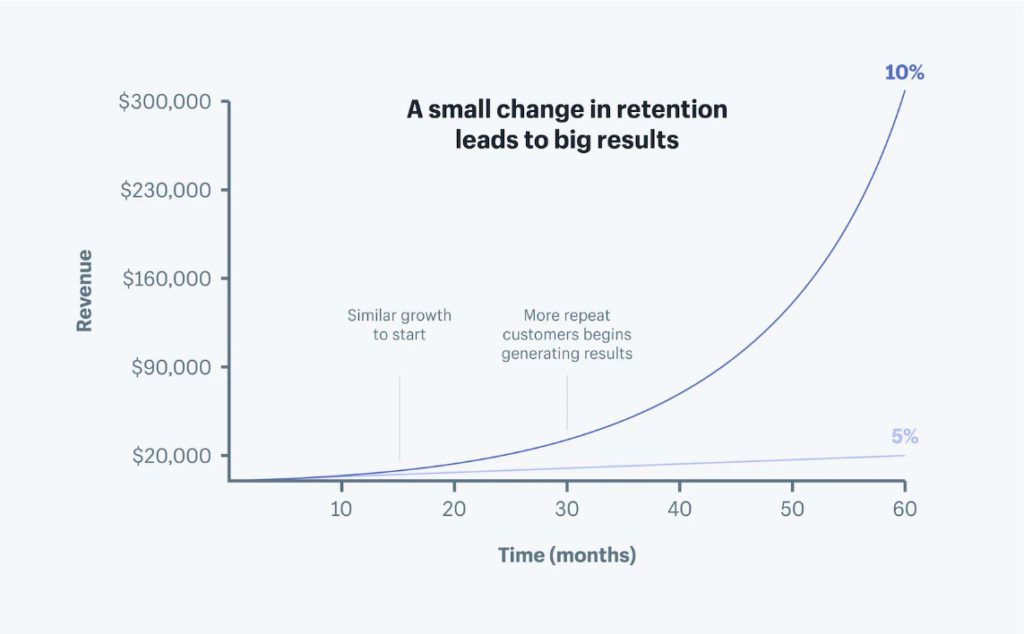
Retention campaigns can be implemented on Facebook and Instagram by combining some of the platform’s features. In particular, two paths can be followed:
- Create custom audiences of those who triggered the”Purchase’ ‘ event one or more times in a given time period
- Leveraging the enterprise CRM, creating a custom audience of customers in the platform.
Audiences created, campaigns launched with goal ” Conversion ” with copy and creative designed specifically for this particular target audience.
A trivial example of a customer retention campaign might be to offer an exclusive benefit to so-called ”VIP” customers, defined on the basis of the frequency and value of purchases made in a given time frame.
Working on customer loyalty is a key step in the overall marketing strategy of an e-commerce (and beyond).
Conclusions
Investing advertising budget on Facebook for a B2C e-commerce can be a wise choice for the purpose of profitability growth as it represents a channel full of opportunities. In this sense, establishing a Facebook Ads Funnel helps to effectively and efficiently achieve sales and revenue goals.
However, in addition to the many opportunities, there are numerous pitfalls in managing a complex and extremely dynamic platform such as that provided by Meta. For the purpose of counteracting them, it is often necessary to outsource campaign and conversion funnel management to experts so that the entrepreneur can focus on other crucial aspects of the business.
We as WebGas.net, Meta’s partner agency, create, manage, analyze and test e-commerce advertising campaigns of various types on a daily basis. If you are an e-commerce owner and have a good advertising budget to invest we will be extremely happy to listen to you in an initial cognitive meeting, so that we can define a precise advertising strategy on Facebook and other channels aimed at increasing purchases and their value.
Request a strategy session now and learn about the results we can achieve together by clicking HERE.

